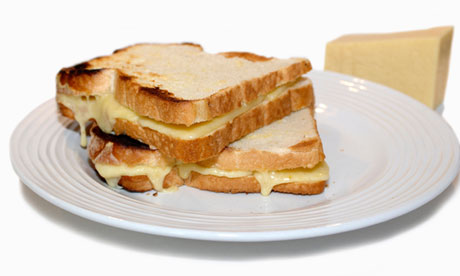
"More salt in cheese than seawater," screeched one tabloid. Consensus Action on Salt and Health (Cash) today publishes research into the salt content of almost 800 supermarket varieties of cheese. The vast majority - 98% - of British households apparently buy the stuff, and it turns out that after bread and bacon, dairy products are the third biggest contributors of salt to the national diet. (Milk naturally contains modest levels of sodium, but much of the salt we eat in dairy is added by cheese manufacturers.)
Most people know that cheese is pretty salty stuff, but many might be surprised to know that a 30g portion of many kinds of cheddar contains more salt than a 30g bag of crisps. Equally of note is the remarkable disparity in salt levels between individual types of cheese. A Co-op gorgonzola was almost six times saltier than its counterpart at Sainsbury's. Morrisons Smooth & Tangy Farmhouse Cheddar contains 0.63g of salt per 30g portion, while Waitrose Reduced Fat Light Mild Cheese – a cheddar variant – was almost 30% less salty.
Salt is vital to mature and flavour hard cheeses such as parmesan and soft-rind ones such as camembert. It stops bacteria from growing inside cheese and gives the food its savoury finish. Good cheese is highly nutritious, full of calcium, vitamins and minerals. A rather miffed-sounding director of the Dairy Council told the BBC that the survey is "mixing up the effect of cheese on health with the effect of salt on health … Salt is not added for taste or flavour but for safety and technical reasons."
However, the survey should be of use to people who enjoy cheese but are nervous about their salt intake. And parents might benefit from knowing that different varieties of cheese can have dramatically different salt levels. "We found that two slices of one cheese and two slices of certain breads contained over 2g of salt between them," says Katharine Jenner, a public health nutritionist and campaign director at Cash.
"That's the maximum you can feed a three-year-old in a day. But if you choose the lowest-salt bread and cheese, you can halve that. We're not saying 'Don't give your child a cheese sandwich', but we recommend people stay away from cheeses where the manufacturers have purposefully added unnecessary salt."
• Click on our interactive to learn the salt and fat levels in your favourite cheese

